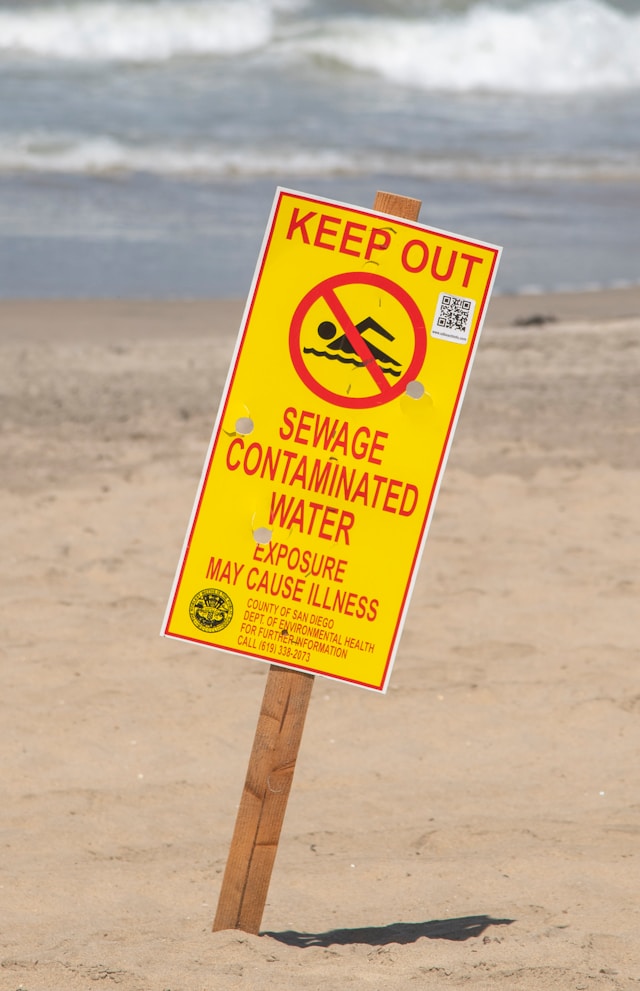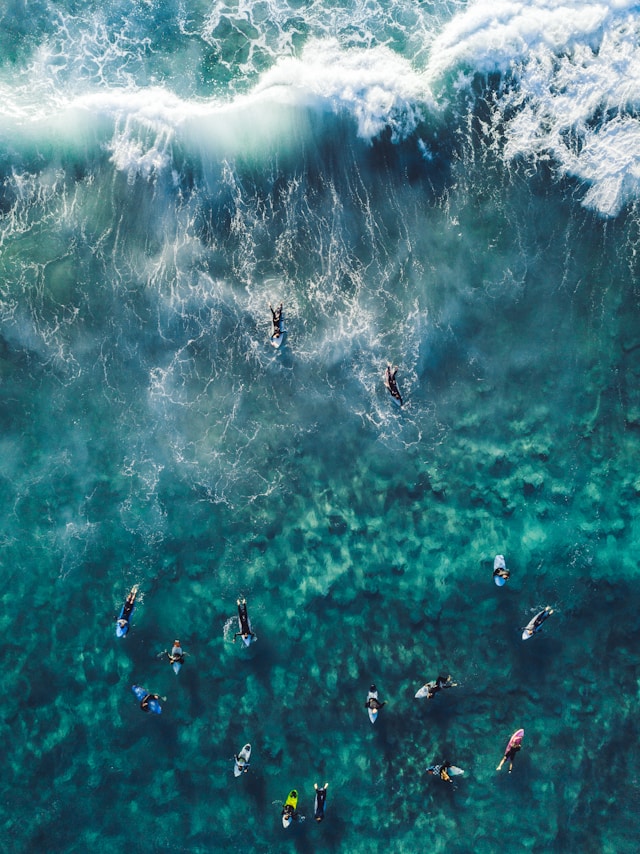SANTA MONICA—On February 13, after nearly a week of rain and reports of sewage-infested waters, California surfers found unusually large swells in the Santa Monica beaches making the waves irresistible to many surfers.

The following quote is from a group of YouTubers out of Malibu that call themselves, “Salty Beards.”
From Salty Beards:
“5 straight days of dumping rain in Southern California creating disgusting sewage spills into the ocean with storm drains overflowing and wild winds. On the contrary the storm also brought us some pretty unique swell direction, which created some fun waves in places (like Santa Monica) that usually doesn’t get great waves. For about 30 minutes this stretch of beach turned on for pro surfers Yadin Nicol, Luke Davis, Hunter Jones and Jacob Atwood.”
According to a Surfer Health Study, put out by Surfrider, there is an increased health risk to those who surf within 72 hours following a storm. The study was based on findings from a decade ago.
“Although the winters of 2013-14 and 2014-15 were drought years, the region was hit with 10 storms that produced rainfall ranging from 0.1 to over 2 inches. Key Findings 1 & 2: There is an increased rate of gastrointestinal illness from surfing, and that rate increases following wet weather.
The study found that when surfers enter the water during or in the 72 hours following storm events, an average of 30 per 1,000 will contract GI illness, compared to 18 per 1,000 surfers who will contract GI illness without entering the water, and 25 per 1,000 who will contract GI illness when entering the water during dry weather (Figure 1). From a health risk perspective, that is an extra – or excess – risk of 12 surfers per 1,000 on average who will become ill when they enter the ocean in wet weather, compared to when they do not enter the ocean.”
Reports indicate that the sewage spills after a storm is from overflow running into the area lakes, rivers, streams, and the Pacific Ocean.
A report by the San Diego State University (SDSU) updated on February 13, indicated that in addition to the contamination caused by overflow, there is raw, unfiltered sewage spilling from the Tijuana River basin into the Pacific Ocean.
This study was requested by, Rep. Scott Peters (D-CA-50th District) over health concerns at Imperial Beach.
“This environmental catastrophe has hurt the region for many years, resulting in decades of adverse health consequences. We must approach it as a health and national security concern, which is why I asked the [Conrad] Prebys Foundation to help me build the case that this crisis goes far beyond beach closures; the people of South Bay now endure constant toxic air pollution that damages their health and well-being.”
The Tijuana Watershed begins in the mountains near Mount Laguna. Water then flows into Mexico before entering San Diego County where it reaches the Pacific Ocean south of Imperial Beach.
The following report was published October 11, 2023. The full text of this statement may be viewed on the California Waterboard website for San Diego.
“Pipeline PB1A Repairs in Mexico
The most immediate reduction of polluted flows will be realized when the ongoing repairs to a pipeline in Tijuana (PB1A) are completed by November 2023. This repair will immediately reduce the flows in the Tijuana River by 30 million gallons per day (mgd, 75-100% of daily flows) and allow IBWC to expedite repairs to the U.S. IBWC South Bay International Wastewater Treatment Plant (ITP). This pipeline conveys flows diverted from the Tijuana River (PBCILA) and untreated wastewater in the collection system to be discharged on the coast in Mexico at Punta Bandera.
In July 2022, this pipeline failed in Matadero Cañon and damaged pipeline PB1B immediately next to it. PB1B was promptly repaired, but repairs to PB1A were delayed due to its proximity to the border fence, which required federal approvals in both countries, and technical challenges due to an extremely steep slope.”






